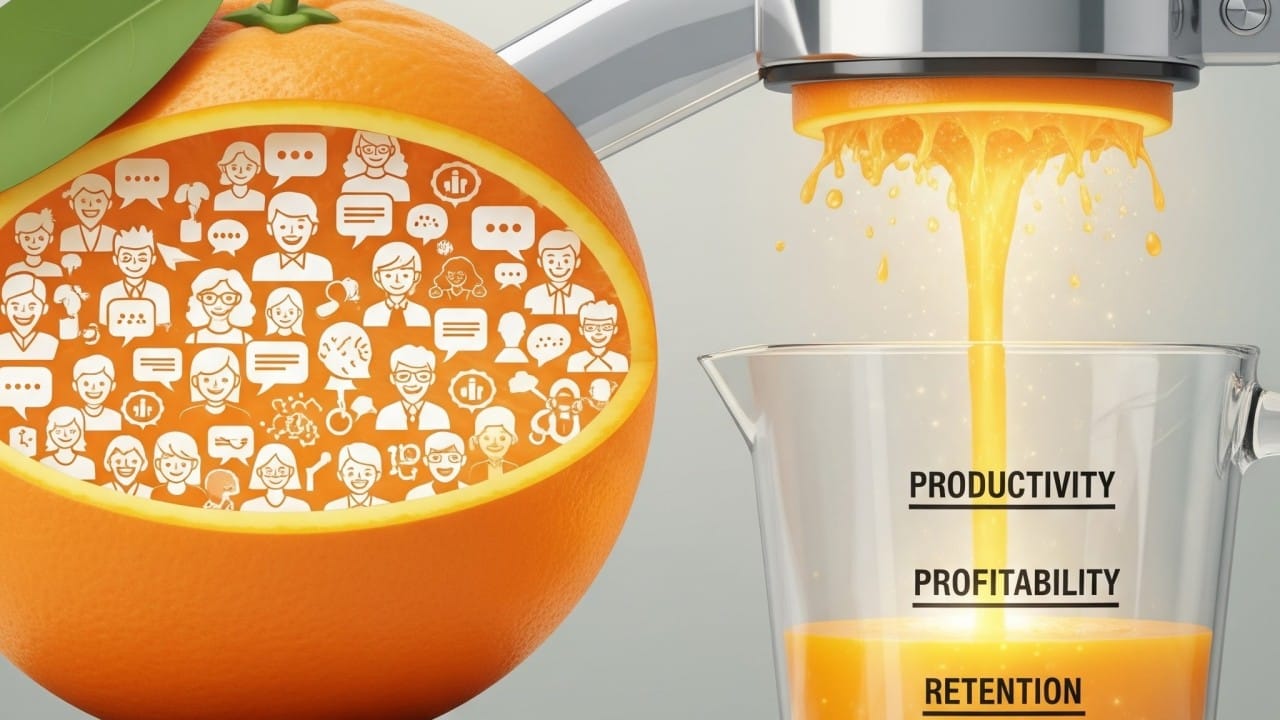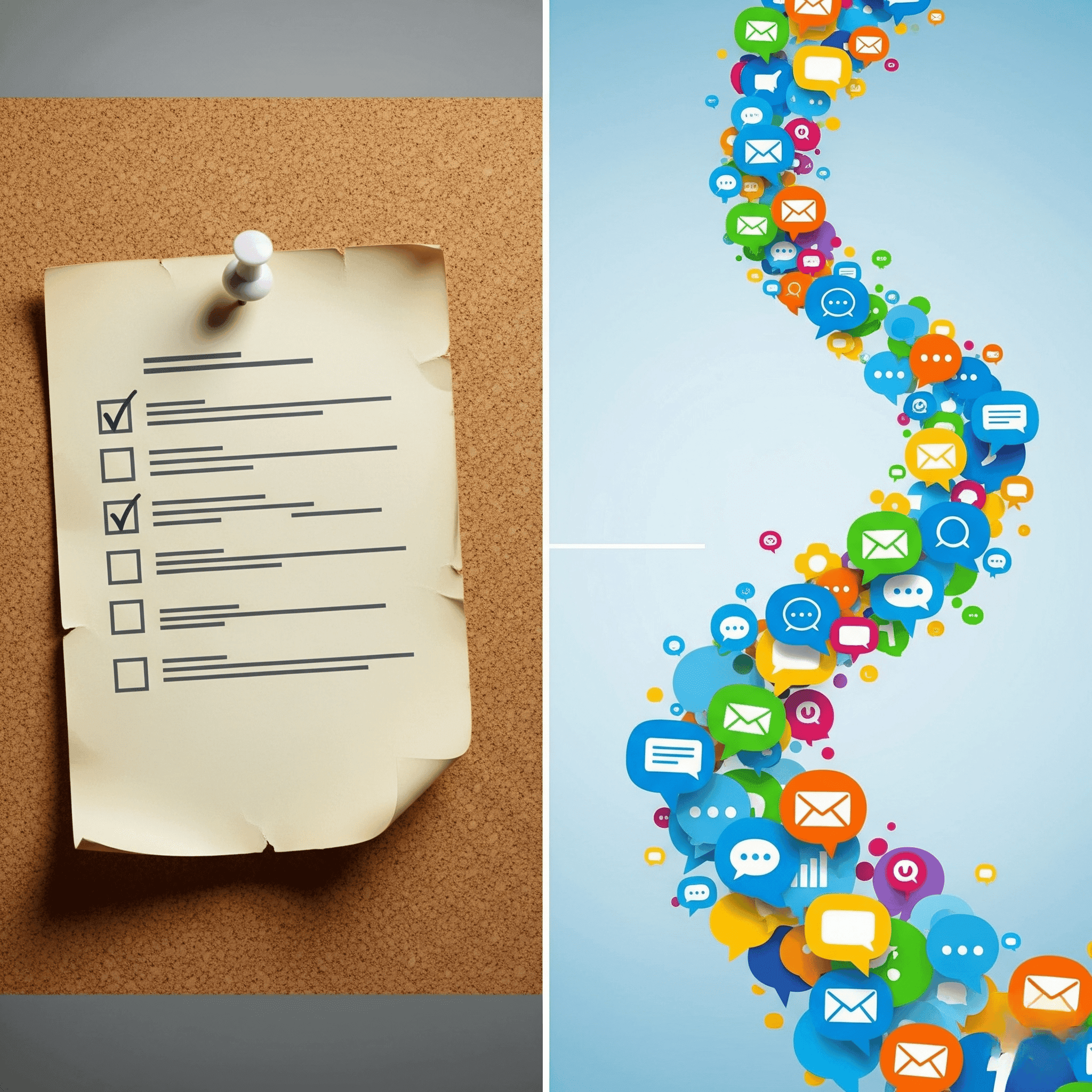Employee Listening: Is the Juice Worth the Squeeze?

More than two decades after “First, Break All the Rules” by Marcus Buckingham and colleagues put employee engagement on the map, we’ve become very good at asking people how they feel—and we’ve proved it matters to business results. But while work sped up and reorganized itself, those engagement lines have barely budged. An annual check‑in can’t keep pace with modern reality or catch the moments that make people stay, leave, or go the extra mile.
Employee listening is the upgrade: a continuous, structured approach to capturing employee feedback, perceptions, and behavioral signals; analyzing them for insight; and acting on the findings to shape decisions, improve the employee experience, and drive business performance. Layer in organizational network analysis (ONA) and you stop guessing how work flows—you can see the connectors, bottlenecks, and overload risk that make or break execution.
This article traces the evolution of employee engagement to employee listening, discusses ROI, and makes a simple case: if you want more juice, don’t just squeeze the survey—listen continuously, map the network, and act.
First, Break All the Rules
I can still remember the business presentation on employee engagement: “People leave or stay because of their managers.” I’m citing this from memory, but you get the point. The scale of the research behind that observation—introduced by the book “First, Break All the Rules”—was massive: over 1 million employees and 80,000 manager interviews collected from 1975–2000. With numbers like that, everyone paid attention. The book popularized the term “employee engagement” and made it a business priority, showing that engagement linked more strongly to business results than the traditional measures of satisfaction used at the time.
Before There Was Employee Listening, It Was All About Employee Engagement
However, it wasn’t entirely clear what “employee engagement” meant—there was no universal, unifying definition. That was more of an academic concern, because the market mainly needed proof of a connection to business performance—and it had that. Consulting firms leaned into the opportunity, building different (but not wildly different) models and declaring each one “best in class.” If you asked a consultant for a preference, you’d likely hear, “Well, that’s a good question—it depends.” Selecting engagement tools soon felt like choosing your next meal: a series of tradeoffs based on budget, time, and utility.
Since 2000, employee engagement surveys have become the standard for most organizations. Gallup reports that over 90% of organizations conduct some form of engagement survey. Across the 25 years Gallup has measured engagement, scores have ranged from 13%–24% globally and 26%–36% in the U.S.
The Emergence of Employee Listening
The annual engagement survey provided valuable insights into how employees felt about the organization and their jobs. In a predictable, stable environment, a yearly checkup might be enough. But the 2000s and 2010s were anything but stable. In HR (and beyond), “VUCA” became a staple descriptor—volatility, uncertainty, complexity, and ambiguity. Our systems needed to realign with that reality and adopt a more comprehensive, intentional approach to capturing the employee voice. To attract, retain, and develop talent, we had to manage information channels and feedback loops more deliberately to adapt, understand, and address employee needs. Ultimately, we moved to an “always on” approach centered on listening.
The tactics and essence of employee listening are not new—we’ve been experimenting since the Hawthorne studies in the 1920s. What’s new is the consolidation, intentionality, coordination, and scale: a more systematic approach to understanding employees’ voices.
In the late 2010s, the market shifted from once‑a‑year feedback to shorter, more frequent mechanisms. Listening practices, tools, and roles evolved significantly, and organizations began integrating listening into leadership and decision‑making. Organizations that integrate employee listening with business objectives and strategic action show significantly better results—they are nine times more likely to make real progress on top business and talent goals.

What Is the ROI (the Juice) of Employee Listening?
A long time ago someone told me, “A question is an intervention.” The act of asking prompts a response—not just the answer, but the thinking it triggers. A question communicates interest and invites people to reflect on experiences they might not otherwise consider. That’s valuable to any organization. And when people feel heard—and we act on what we hear—performance moves.
Gallup finds highly engaged teams are 21% more profitable and 17% more productive, with 59% less attrition and 41% lower absenteeism than low‑engagement teams. On the flip side, disengagement drains $450–$550B in U.S. productivity each year, and replacing a leaver can cost 50%–250% of salary—so preventing even a few exits matters. Organizations that listen and act continuously are also four times more likely to retain employees in the near term. The benefits of employee listening show up both as avoided costs and as better outputs.
ONA, an Essential Tool
Okay—what is an “ONA”? I get it: another acronym. But there’s a lot of untapped utility in organizational network analysis. We’ve all been taught how to do the thing… and then had to do the thing. When you need hands‑on guidance, how do you find the go‑to expert? During change and transformation, who are the influencers who spread the word and help put things into action? If listening tells you what people experience, ONA shows how work flows—who connects teams, where information stalls, and who influences adoption.

When I first learned about ONA, I kept asking, “Does the added complexity really deliver incremental value?” After an in‑depth three‑day training, the potential use cases felt endless. It’s an essential tool that benefits any organization—and I’m not just justifying my personal investment. Every change‑management initiative should include an ONA early in the planning process.
ONA, Extra Juice
Today, while managers still matter, execution is increasingly about teams—the ones we form to get things done. Teams eventually disband, but the connections we make aren’t lost. We all remember that expert who could solve anything, or the person who coached us through a tough problem. We store those experiences in memory—useful to us, but invisible to the organization. ONA helps make those hidden connections visible.
That visibility pays off: change programs that mobilize influencers see ROI jump from ~35% to 143%, and sometimes up to 300%. In practice, a European retail bank used ONA to fix siloed branches and lifted loan sales by 11%; a midsize biotech used ONA to design hybrid schedules that preserved 77% of critical in‑person collaborations while meeting 82% of employee preferences. And because a small group of informal leaders (often ~3%) can sway most colleagues, finding and engaging these influencers early prevents costly turnover and speeds execution. We use tools that help us build new networks and reinforce existing ones. Incorporating tools into your listening strategy that illuminate hidden networks unveils new opportunities for employees and enhances organizational capability.
From Surveys to Systems
Listening tells you what people experience; ONA shows how it spreads. Pick one upcoming moment (a rollout, reorg, or staffing change), map the informal network, and enlist influencers early. Then close the loop publicly. The squeeze isn’t the survey—it’s the discipline to listen, map, and act.